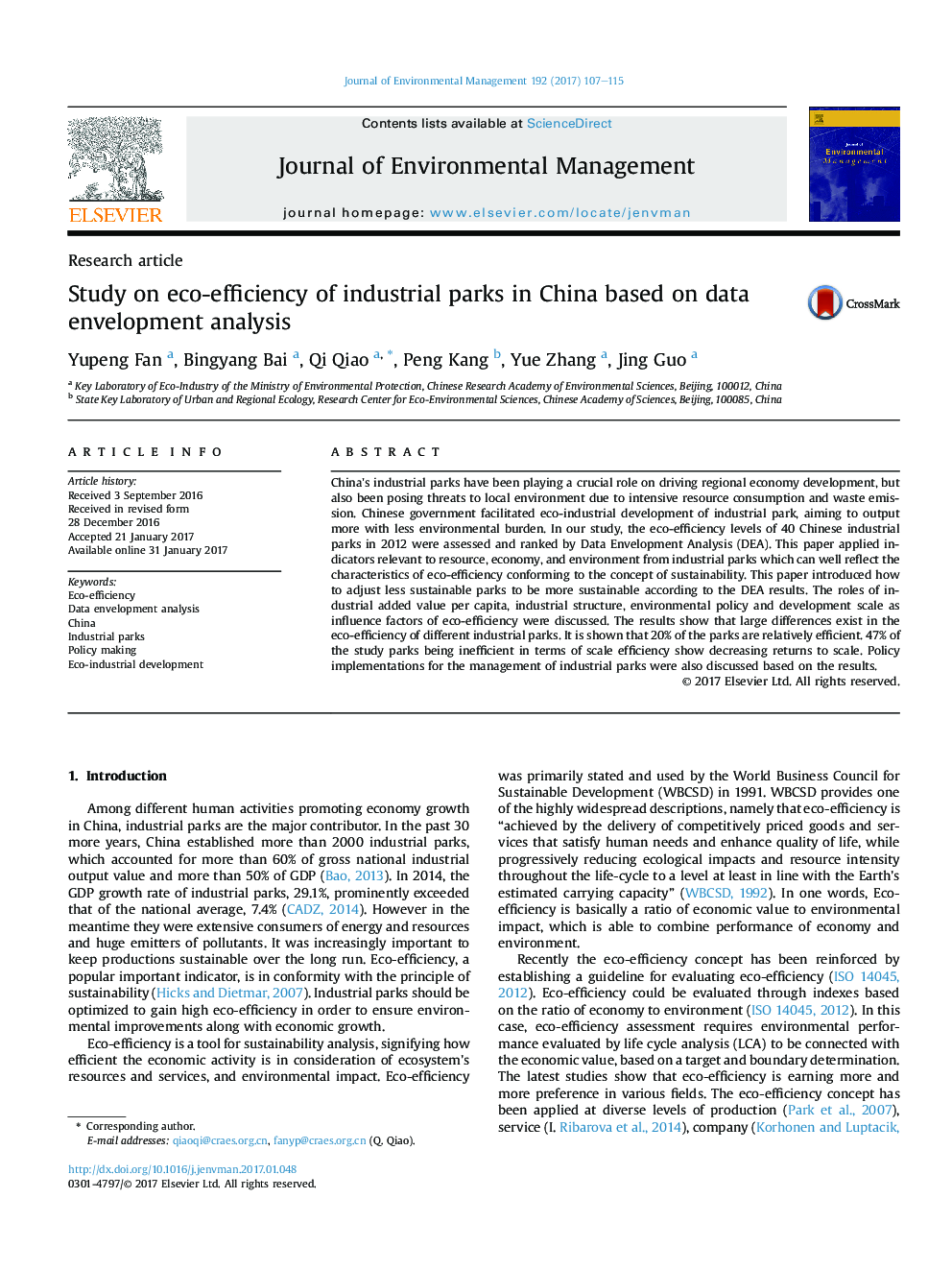| کد مقاله | کد نشریه | سال انتشار | مقاله انگلیسی | نسخه تمام متن |
|---|---|---|---|---|
| 5117033 | 1485223 | 2017 | 9 صفحه PDF | دانلود رایگان |
- Eco-efficiency of industrial parks was evaluated by Data Envelopment Analysis.
- 3 input and 5 output indicators were selected in analysis framework.
- We show how to regulate industrial parks based on analysis results.
- Influence factors of eco-efficiency were analyzed.
- Policy implications were proposed to increase the eco-efficiency of parks.
China's industrial parks have been playing a crucial role on driving regional economy development, but also been posing threats to local environment due to intensive resource consumption and waste emission. Chinese government facilitated eco-industrial development of industrial park, aiming to output more with less environmental burden. In our study, the eco-efficiency levels of 40 Chinese industrial parks in 2012 were assessed and ranked by Data Envelopment Analysis (DEA). This paper applied indicators relevant to resource, economy, and environment from industrial parks which can well reflect the characteristics of eco-efficiency conforming to the concept of sustainability. This paper introduced how to adjust less sustainable parks to be more sustainable according to the DEA results. The roles of industrial added value per capita, industrial structure, environmental policy and development scale as influence factors of eco-efficiency were discussed. The results show that large differences exist in the eco-efficiency of different industrial parks. It is shown that 20% of the parks are relatively efficient. 47% of the study parks being inefficient in terms of scale efficiency show decreasing returns to scale. Policy implementations for the management of industrial parks were also discussed based on the results.
Journal: Journal of Environmental Management - Volume 192, 1 May 2017, Pages 107-115
